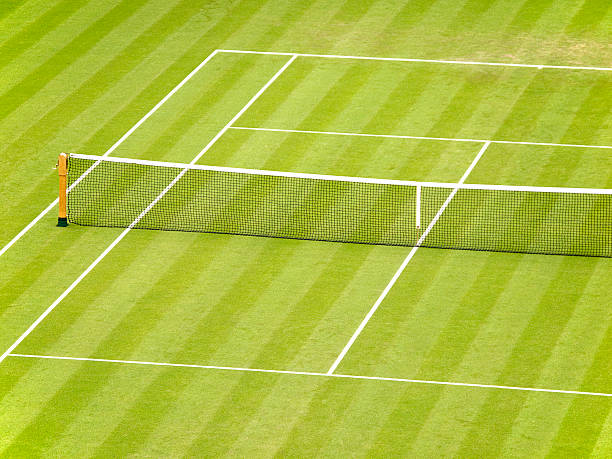The transition from clay court to grass court presents a unique challenge for tennis players, requiring them to adapt their playing style, footwork, and strategy. The contrasting characteristics of these surfaces demand a significant adjustment, and this is particularly evident when comparing two prestigious tournaments, Roland Garros and Wimbledon. Despite their close dates in the tennis calendar, the differences between these courts provide an intriguing backdrop for players’ preparations and the strategies they employ to succeed on each surface.
The Challenge of Transition:
Moving from the clay courts of Roland Garros, home to the French Open, to the grass courts of Wimbledon within a few weeks poses a considerable challenge for tennis players. The contrasting surface properties and playing conditions require players to swiftly adapt their game.
Differences between Clay and Grass Courts:
Surface Characteristics:
Clay courts are made of crushed brick or stone and offer a slower surface, providing players with more time to react. The ball bounces higher and slower on clay, allowing players to engage in long baseline rallies and employ spin shots effectively. The ability to slide and retrieve balls from challenging positions is also crucial on clay.
In contrast, grass courts at Wimbledon are known for their faster pace and lower bounce. The ball skids through the grass, making it challenging for players to generate spin. The surface rewards a more aggressive and attacking style of play, with serve-and-volley tactics being particularly effective.
Footwork and Movement:
The transition from clay to grass demands adjustments in footwork and movement. On clay, players rely on sliding and long, extended strides to recover and reach wide shots effectively. Grass, however, requires shorter, more precise steps, as the surface can be slippery. The change in movement patterns can take time to adapt to, impacting players’ timing and rhythm.
Serve and Return:
On clay, the higher bounce and slower pace allow players to put more spin on their serves and returns. The surface assists players in executing kick serves and spin shots, making it challenging for opponents to handle. On grass, the lower bounce limits the effectiveness of spin shots, encouraging players to focus more on their flat serves and aggressive returns.
Preparing for the Transition:
Physical Conditioning:
Players must prioritize their physical conditioning during the transition period. They need to adjust their training routines to accommodate the change in surface and the different demands it places on the body. Enhancing speed, agility, and explosiveness becomes crucial for grass court success.
Practice on Grass:
To adapt to the grass court, players participate in exhibition matches, practice sessions, and warm-up tournaments specifically held on grass. These opportunities allow them to acclimate to the surface’s unique characteristics and refine their shots and movement patterns.
Mental Adaptation:
Transitioning from clay to grass involves a mental shift as well. Players need to alter their mindset, shifting from the patience and consistency required on clay to a more aggressive and decisive approach on grass. The ability to adapt their game style swiftly and stay mentally focused is vital for success.
Roland Garros and Wimbledon:
Roland Garros and Wimbledon are two of the most prestigious Grand Slam tournaments, held in close proximity on the tennis calendar. Despite their proximity, the differences in court surfaces make them distinct and challenging events.
The clay courts of Roland Garros favour players with exceptional endurance, stamina, and defensive skills. The tournament tests players’ ability to construct points and rally from the baseline over extended periods.
Wimbledon, on the other hand, demands players who possess strong serves, net play, and adaptability to the faster surface. Success at Wimbledon requires players to efficiently move forward and finish points quickly, often utilizing serve-and-volley tactics.
The transition from clay court to grass court presents a formidable challenge for tennis players, both physically and mentally. The contrasting characteristics of these surfaces necessitate adaptations in playing style, footwork, and strategy. The proximity of Roland Garros and Wimbledon on the tennis calendar further intensifies the difficulty, as players must swiftly adjust to the unique demands of each surface. Ultimately, those who can effectively transition from clay to grass and adapt their game to the specific challenges posed by each surface increase their chances of achieving success on the tennis courts.






